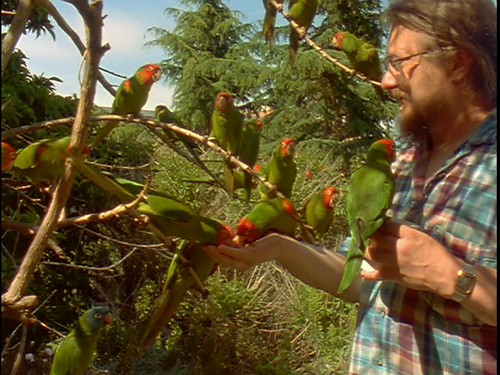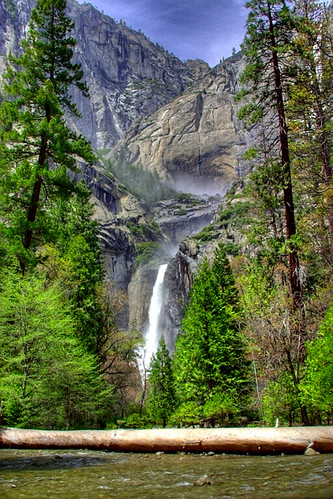A revelatory documentary like The Wild Parrots of Telegraph Hill perhaps pinpoints the real reason: the joy of discovering unfamiliar aspects of a familiar place. For 18 years I have looked out the window at Telegraph Hill, where unbeknownst (to me, at least) escaped conure parrots have multiplied into a flock that now numbers well over one hundred. The parrots have acclimated well to San Francisco, where the main perils are not cold weather but insufficient food and the red-tailed hawks who can swoop down on inattentive birds.
The film also tells the story of Mark Bittner, the pony-tailed musician who came to San Francisco in search of fame, fortune, and purpose. He found the latter by caring for injured members of the flock (and may well finally achieve the former as this “little” movie grows in popularity). Mark Bittner subsists on the largesse of others and seems untroubled by his economic circumstances; what worries him is the welfare of the birds.
The parrots have names like Mingus, Connor, Picasso, and Sophie. We observe their interactions with each other and their relationship with Mark. Playing on our anthropomorphic instincts without overtly manipulating them, the movie brings along the audience so that it listens more closely to a statement by Mark near the end that it would have dismissed had it been made at the beginning:
All life is one whole, it really is. There’s a story that the [Zen Master] told. He went to Yosemite. He sees this big waterfall coming over this cliff. It’s one river at the top of the cliff. But as it falls the river breaks up into all these individual droplets. Then it hits the bottom of the cliff, and it’s one river again. We’re all one river till we hit this cliff. That distance between the top of the cliff and the bottom of the cliff is our life. And all the individual little droplets think they really are individual little droplets until they hit the bottom, and then they’re gone. But that droplet doesn’t lose anything. It gains. It gains the rest of the river.© 2006 Stephen Yuen


No comments:
Post a Comment